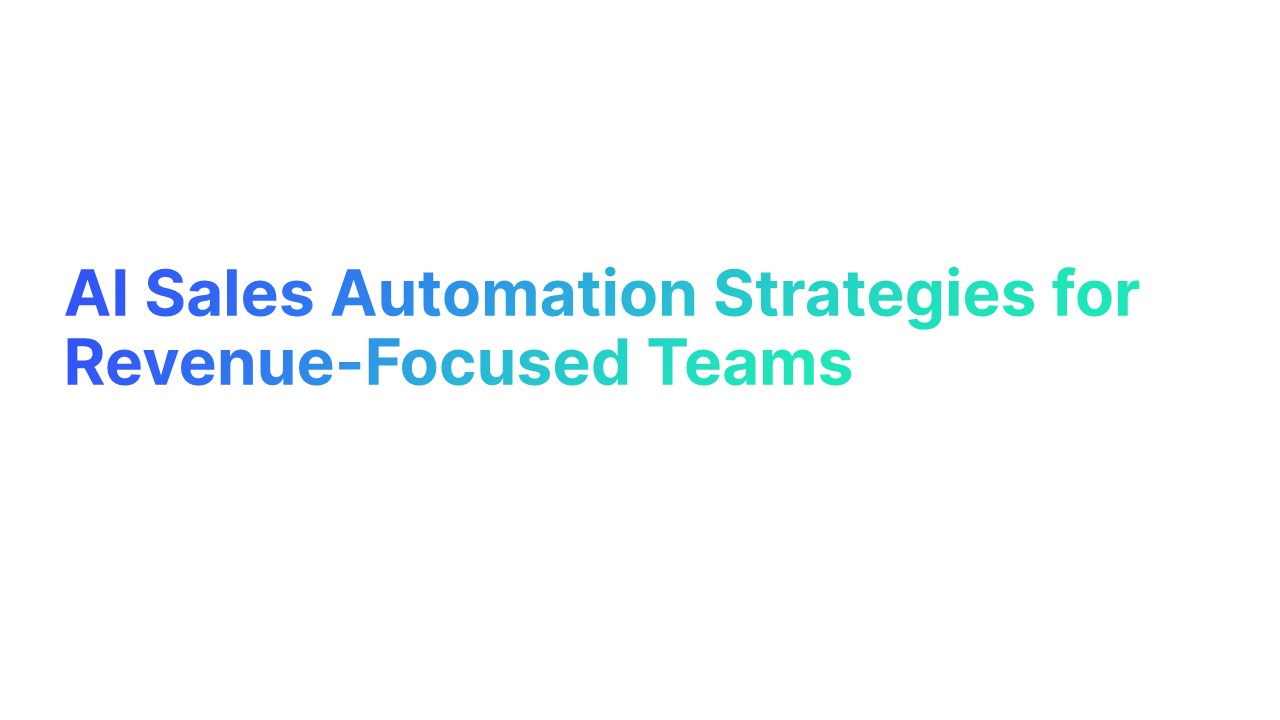Picture having a constant flow of high-quality leads eagerly reaching out to learn about your product or service. Sounds perfect, right? The truth is, 61% of marketers consider lead generation their biggest challenge (HubSpot).
But here’s the good news—you’re about to unlock actionable strategies to attract and convert prospects effectively.
This guide will walk you through everything you need to know about leads, from understanding the different types to mastering the entire lead generation process.
So, even if you're new to lead generation or aiming to refine your lead generation efforts, this article is filled with insights to increase your success.
What is a Lead?
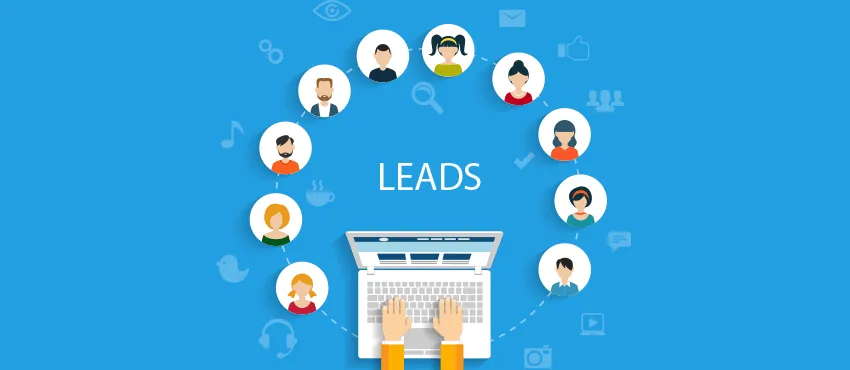
A lead is someone who shows interest in your product or service. They might visit your website, sign up for a newsletter, or follow you on social media. Leads are people who could become your customers with the right approach.
To "lead generate" means to find and attract these potential customers. It’s the first step in growing your business and building strong relationships.
4 Key Types of Leads

1. Marketing-Qualified Leads (MQLs)
A Marketing Qualified Lead is someone who has shown interest in your product or service through actions like downloading an eBook or signing up for a newsletter.
They need more information before they’re ready to buy. Using tools like email campaigns and valuable content can help nurture these leads.
"Supercharge Your Lead Generation Today! Try Alore's Automated Email Campaigns for Personalized Outreach"
2. Sales-Qualified Leads (SQLs)
SQLs are leads ready for direct sales conversations. They’ve shown clear buying intent, such as requesting a demo. It’s your sales team’s job to engage them and close the deal.
3. Product-Qualified Leads (PQLs)
PQLs are leads who’ve used your product or service, often through a free trial. If they’ve found value, they’re more likely to become paying customers. Follow up with offers or personalized support to convert them.
4. Service-Qualified Leads
These leads need additional services or upgrades. For example, a customer might request a premium feature or a higher plan. Your support team can guide them toward the right solution.
What is Lead Generation?
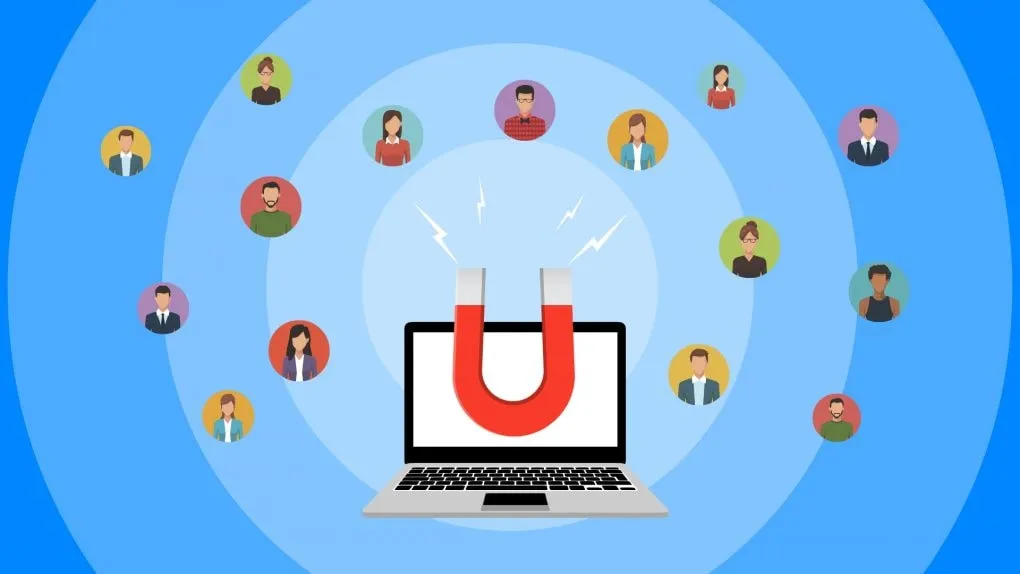
Lead generation is the process of finding people who are interested in your product or service. These people, called leads, can come from many places like social media, email, or your website. It’s an important step for growing your business because it helps you connect with potential customers.
Why is Lead Generation Important?
1. Drives Targeted Growth
Lead generation allows you to focus on people who are most likely to buy. This means your marketing efforts are not wasted. It helps you attract the right audience and grow your business faster. A tailored lead generation strategy ensures your efforts are focused on converting the right audience.
2. Builds a Sustainable Sales Funnel
Think of a sales funnel as a path. Leads move from being curious visitors to happy customers. Lead generation ensures your funnel always has new prospects to work with.
3. Enhances Market Insights
By collecting lead data, you can learn more about your audience. What do they like? What do they need? These insights help you improve your product or service.
4. Increases Conversion Opportunities
When you generate leads, you increase your chances of turning potential customers into paying ones. More leads mean more opportunities to make sales.
5. Supports Long-Term Business Relationships
Lead generation is not just about making one sale. It’s about building trust and creating lasting relationships with customers. Happy customers are more likely to come back and recommend your business to others.
Sales Lead Generation Funnel

The Sales Lead Generation Funnel is typically divided into three main stages, each representing a part of the buyer’s journey:
1. TOFU (Top of Funnel)
The top of the funnel is where you attract potential leads. These people may not know about your product or service yet. Your goal is to make them aware.
How to do it:
- Use content marketing like blogs, videos, or social media posts.
- Leverage search engine optimization (SEO) to bring organic traffic to your website.
- Share valuable content that solves problems and builds trust.
- A well-planned lead generation campaign improves your chances of connecting with potential customers.
Online lead generation uses platforms like social media and search engines to attract digital audiences.
2. MOFU (Middle of Funnel)
In the middle of the funnel, you engage leads who have shown interest. At this stage, they need more information to move closer to a decision.
How to do it:
- Offer lead magnets, such as free guides or webinars.
- Use email campaigns to share detailed product benefits.
- Introduce lead scoring to prioritize high-quality leads for follow-up.
3. BOFU (Bottom of Funnel)
At the bottom of the funnel, leads are ready to make a purchase. Your focus should be on closing the deal.
How to do it:
- Use personalized offers or demos to address specific needs.
- Highlight success stories or testimonials to build confidence.
- Ensure your sales team is ready to engage and finalize sales.
Lead Generation Process

1. Attracting Potential Customers
Attracting potential customers is the first step in lead generation. The goal is to make people notice your business.
How to do it:
- Using Social Media Platforms: Posting engaging content on platforms like Instagram or Facebook can draw attention to your product or service.
- Search Engine Optimization (SEO): Optimizing your website helps it rank higher in search results, making it easier for customers to find you.
- Creating Valuable Content: Blogs, videos, or infographics that solve customer problems encourage them to explore your business further.
2. Engaging with Prospects
Once you attract people, the next step is engaging with them. Engagement means interacting with potential customers to build trust and interest.
Here’s how to do it:
- Email Campaigns: Send personalized emails to share more about your products or services. Include special offers to keep their interest.
- Live Chat or Chatbots: Help customers quickly by answering their questions through live chat or AI-powered chatbots.
- Social Media Conversations: Reply to comments and messages on your social media pages to show you care.
"Transform Engagement into Conversions—Explore Alore's Drip Campaigner with Real-Time Activity Logs."
3. Collecting Contact Information
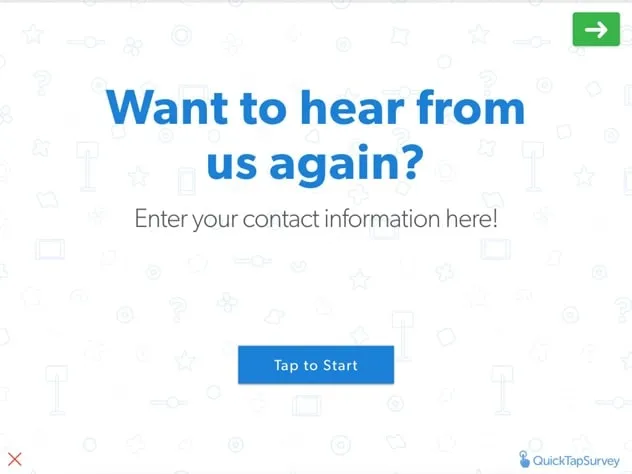
To keep in touch with potential customers, you need their contact details.
Here’s how to do it:
- Use Lead Capture Forms: These are forms on your website where visitors can share details like their name, email, and phone number. For example, offering a free eBook or a discount in exchange for their email often works well.
- Leverage Social Media Platforms: Platforms like Instagram or Facebook can help you connect with potential leads through direct messages or comments. Add a link to a sign-up form in your posts or bio.
- Interactive Tools: Use surveys, quizzes, or pop-ups on your website to encourage visitors to share their details. Keep it short and easy to complete.
4. Qualifying Leads
Qualifying leads means deciding which potential customers are ready to buy.
Here’s how to do it:
- Lead Scoring: Assign a score to each lead based on their actions, like visiting your website or clicking on emails. Higher scores mean they are more likely to buy.
- Ask the Right Questions: Use your forms or emails to learn more about their needs. For example, ask what product they are interested in or their budget.
- Use Sales Qualified Leads (SQLs): These are leads that your sales team can follow up with because they’ve shown clear interest, like booking a demo or requesting a call.
5. Handing Off to Sales
Once you’ve qualified leads, it’s time to pass them to your sales team. This step ensures that potential customers receive the right attention to close a deal.
Here's how to do it:
- Share Lead Information Clearly: Provide the sales team with detailed data about the lead. Include their contact details, actions they’ve taken, and their interests.
- Use a Sales Qualified Lead (SQL) System: An SQL means the lead is ready for a sales conversation. For example, they may have requested a demo or expressed strong interest in your product.
- Communicate Regularly: Have clear communication between the marketing and sales teams. This avoids confusion and ensures no leads are missed.
"Never Miss a Lead! Alore's Seamless Mail Integration Ensures Your Campaigns Run Smoothly Every Day."
6. Continuous Optimization
Lead generation doesn’t stop after handing off leads. It’s important to keep improving your process to get a sales qualified lead and better results.
Here's how:
- Review Data Regularly: Look at what’s working and what isn’t. For example, check how many leads convert to paying customers. Use this data to adjust your strategies.
- Test Different Strategies: Experiment with new tactics like social media campaigns, content marketing, or updated lead generation tools.
- Ask for Feedback: Talk to your sales team about the quality of leads. This helps you refine your lead generation process.
- Keep Up with Trends: Lead generation tools and techniques evolve. Stay informed about new tools or methods, like AI-powered lead scoring, to stay ahead of competitors.
How to Generate Leads

1. Utilize Tailored Email Campaigns
Tailored email campaigns are personalized messages sent to potential customers. These emails cater to the specific needs or interests of your audience. They make your communication more relevant and engaging. Personalized emails increase engagement and can generate leads faster.
How to Do It:
Group your contacts based on their actions, like signing up for a newsletter or visiting your website. Write personalized emails by using the recipient’s name and highlight what they’re interested in. For example, if someone visited your "lead generation tool" page, send them an email about it.
Include a clear call-to-action (CTA) and use phrases like “Learn More” or “Get Started” to guide them toward the next step. Track performance by monitoring metrics like open rates and click-through rates to improve your campaigns.
2. Provide Engaging Interactive Content
Interactive content involves your audience directly. It goes beyond text to create a fun and engaging experience, which can attract high-quality leads. Interactive content captures attention and makes your brand memorable.
How to Do It:
Use quizzes to learn more about your audience while offering value, like a free report in exchange for answers.
Host Webinars or Live Q&A Sessions. Discuss topics your audience cares about and answer their questions.
Use infographics or explainer videos to simplify complex topics. Provide free tools, guides, or eBooks in exchange for contact information.
3. Conduct Webinars or Live Events
Webinars and live events are powerful tools for attracting high-quality leads. They allow you to share valuable insights while interacting directly with your audience.
A webinar can help explain how your product or service solves specific problems. For example, if you sell a "lead generation tool," a webinar can show how it works and its benefits for businesses.
How to Do It:
To host a successful webinar, choose a topic that addresses common pain points or interests of your target audience. Use simple visuals like slides or demos to keep it engaging. Encourage participation by asking questions or including live polls.
After the webinar, collect contact information through a sign-up form or survey. This ensures you can follow up with participants who show interest.
Webinars also position you as an expert in your field, building trust with your audience. By hosting events that provide genuine value, you attract potential customers who are more likely to convert.
4. Establish Referral Programs

Referral programs are another effective way to generate leads. People trust recommendations from friends, family, or colleagues. When your existing customers refer others to your business, the leads they bring are already warm and more likely to convert.
How to Do It:
To set up a referral program, offer incentives for both the referrer and the new customer. For example, you could provide discounts, gift cards, or exclusive access to premium features.
Make the process easy by providing referral links or codes that customers can share through email or social media.
Referral programs also help build loyalty among existing customers. When they see that their referrals are valued, they are more likely to stay engaged with your brand. Additionally, this approach reduces the cost of acquiring new leads since it leverages your current customer base.
Both webinars and referral programs are excellent ways to "generate leads." They are lead generation marketing strategies that combine the power of engagement and trust, making it easier to connect with potential customers.
5. Enhance Landing Pages for Lead Capture
Landing pages are like digital entry points for potential leads. They should clearly explain what you offer and why it’s valuable.
A well-designed landing page can help you capture leads by collecting contact information. Start by creating a headline that grabs attention. For example, “Discover the Best Tool for High-Quality Leads.”
How to Do It:
The content on your landing page should be easy to understand. Use short paragraphs, bullet points, and visuals like images or videos to explain your product or service.
Add a lead capture form where visitors can share their name and email. To encourage sign-ups, offer something valuable, like a free eBook or a discount.
Make sure your landing page is mobile-friendly since many people browse on their phones. Data shows that 74% of users are more likely to return to mobile-optimized pages. Finally, use a clear call-to-action (CTA), such as “Get Started Now” or “Sign Up Free.”
6. Leverage Social Proof and Testimonials
Social proof builds trust. When potential leads see others benefiting from your product, they are more likely to show interest. Testimonials, reviews, and case studies work well for this purpose.
How to Do It:
Start by collecting feedback from your existing customers. Ask them to share their success stories or leave reviews.
Display these testimonials on your website, landing pages, and social media platforms. For example, a satisfied customer could say, “This tool helped us generate 50% more leads in just one month.”
You can also showcase statistics, like the number of customers who use your product or the results they’ve achieved. Social proof not only attracts potential leads but also increases conversion rates by building credibility.
Both of these methods—enhanced landing pages and social proof—are powerful ways to "lead generate." By making your pages user-friendly and leveraging customer trust, you’ll be well on your way to attracting high-quality leads.
Lead Qualification Process

1. Define Clear Qualification Criteria
To qualify leads, you need clear rules or standards. These criteria help you decide if a full service qualified lead is ready for your sales team. Start by asking yourself: What makes a good customer? For example, is it their budget, industry, or specific needs?
Once you have your criteria, use tools like lead scoring to rank your leads. A lead score assigns points to leads based on their actions.
For example, a lead who visits your pricing page might score higher than one who only views a blog post. By defining clear criteria, you save time and focus on the best opportunities.
2. Segment Leads into Tiers
Not all leads are the same. Some are ready to buy, while others need more time or information. This is where segmentation helps. Divide your leads into tiers based on their readiness.
For example:
- Tier 1: Leads ready for a sales conversation (hot leads).
- Tier 2: Leads who show interest but need nurturing (warm leads).
- Tier 3: Leads who are just exploring (cold leads).
Segmenting helps you provide the right experience for each group. Hot leads might get a call from your sales team, while warm leads could receive follow-up emails with helpful content.
3. Conduct Discovery Calls or Surveys

Discovery calls or surveys help you understand your leads better. They let you ask questions to identify if someone is a good fit for your product or service.
Start with a friendly introduction during a call or in your survey. Ask simple, relevant questions like, “What is your biggest challenge right now?” or “What specific features are you looking for in a solution?” These questions give insights into their needs and priorities.
During discovery calls, listen carefully and note their answers. Surveys are another great option, as they allow leads to answer questions at their own pace. Use tools like Google Forms or Typeform to make the process easy and user-friendly.
By collecting this information, you can separate high-quality sales leads from those who may not yet be ready to buy. It saves time for your sales team and ensures a better customer experience.
4. Use Predictive Analytics Tools
Predictive analytics tools use data to forecast which leads are most likely to convert into customers. Start by integrating tools like HubSpot or Salesforce into your lead generation process. These platforms analyze past customer behaviors, like website visits or email clicks, and assign scores to your leads.
For example, a lead who frequently visits your pricing page or downloads your resources may receive a higher score. This helps your sales team focus on the most promising leads. Predictive tools also identify patterns, such as which industries or demographics are more likely to engage.
Predictive analytics takes the guesswork out of lead qualification. It provides accurate, data-driven insights that improve your conversion rates and optimize your efforts.
"Turn Insights into Action—Leverage Alore's Intent Data and Predictive Analytics for Smarter Leads."
5. Involve Both Sales and Marketing Teams
Collaboration between sales and marketing teams is key to qualifying leads effectively. When both teams work together to capture leads, they ensure that only high-quality leads are passed on, saving time and increasing conversions.
Begin by aligning the goals of both marketing channels and teams. Marketing teams should focus on generating potential leads by creating valuable content and targeting the right audience. Sales teams should guide these leads toward making a purchase.
Hold regular meetings to discuss lead generation tactics and scoring criteria. Sales teams can share insights about the type of leads that are converting, while marketing teams can refine their strategies based on this feedback.
Tools like CRM software can also help both teams track and analyze leads efficiently. By working together, sales and the marketing team can ensure better communication, leading to a streamlined process that benefits everyone.
Lead Generation Strategies to Improve Lead Quality

1. Focus on Buyer Persona Development
A buyer persona is a detailed description of your ideal customer. It includes their age, job, challenges, and goals. Think of it as a guide that helps you understand who you’re trying to reach.
Why it’s important:
If you know who your audience is, you can target them better. For example, creating content or offers tailored to their needs improves the chances of converting them into high-quality leads. Companies that use buyer personas report a 73% higher conversion rate, according to HubSpot.
How to implement:
Start by researching your existing customers. What common traits do they share? Use surveys or interviews to collect data.
Next, create a simple profile that outlines their demographics, challenges, and goals. For instance, if you’re targeting small business owners, your buyer persona might highlight that they value affordable solutions and fast customer support.
Once you have a clear persona, design marketing campaigns that speak directly to their needs.
2. Leverage Account-Based Marketing (ABM)
ABM is a strategy where you focus on specific accounts (companies) rather than a broad audience. It’s like customizing your approach for a handful of potential customers instead of everyone.
Why it’s important:
ABM is powerful because it builds deeper relationships with potential leads. Studies show that 85% of marketers say ABM delivers higher ROI than other strategies. This approach is especially helpful for businesses targeting larger companies or specialized industries.
How to implement:
Begin by identifying your target accounts. These should be businesses that fit your ideal customer profile. Next, create personalized content and offers just for them.
For example, send tailored emails or create case studies showing how your product or service solves their specific problems. Use tools like LinkedIn to build brand awareness and connect directly with decision-makers at these companies.
3. Incorporate Intent Data Analytics

Intent data analytics helps you understand what potential leads are interested in. It collects data from online behavior, like what pages people visit or what terms they search. This information reveals what your audience is looking for.
Why is it important:
Using intent data ensures you focus on high-quality leads. It allows you to prioritize leads that are more likely to convert.
According to industry research, companies using intent data increase conversion rates by up to 52%. By knowing what your audience wants, you save time and improve your results.
How to implement it:
Start by using tools like Bombora or Demandbase to track intent signals. Look for patterns in behavior, such as repeated visits to your site or downloading content.
Align this data with your lead scoring system to rank potential leads. Share this information with your sales team to tailor their approach.
For example, if someone reads several blogs about a product or service, your sales team can follow up with a personalized demo offer.
4. Create High-Value, Interactive Content
Interactive content is material that engages users, like quizzes, polls, or calculators. High-value content provides actionable insights or solves problems. Together, they attract and engage potential leads.
Why is it important:
Interactive content holds attention longer than static content. A report from Content Marketing Institute shows that interactive content generates twice the number of conversions compared to passive content. High-value content builds trust and positions you as an expert.
How to implement it:
First, identify the challenges your audience faces. Then create content like “ROI calculators” for businesses or “style quizzes” for consumers.
Make it visually appealing and easy to use. For instance, a real estate company might offer a mortgage calculator to attract potential buyers.
Promote this content through your website, social media platforms, and email campaigns. Ensure your landing pages include lead capture forms so you can collect contact information for further engagement.
5. Enhance SEO with Long-Tail Keywords
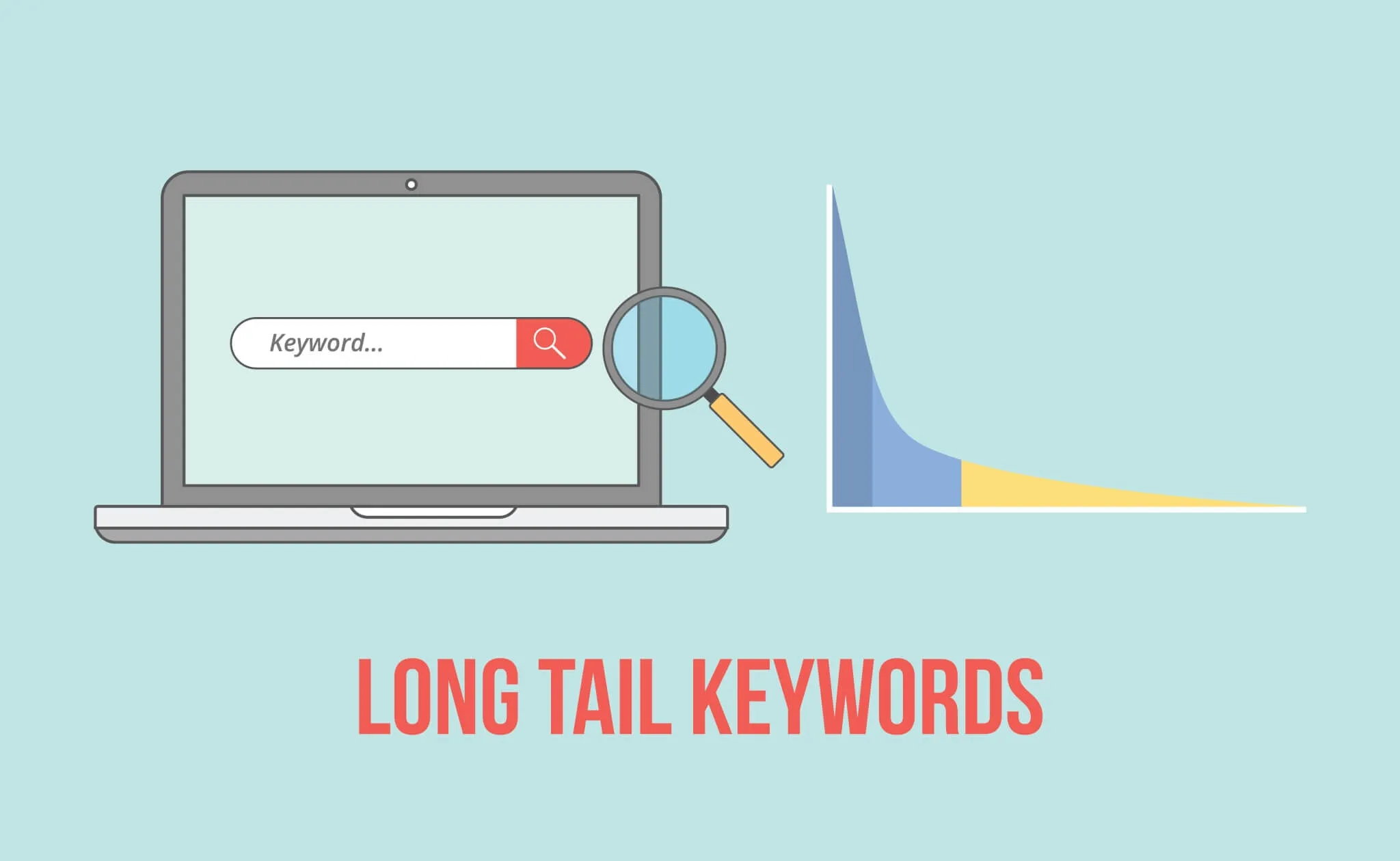
Long-tail keywords are specific phrases people type into search engines. For example, instead of “lead generate,” they might search “how to generate quality leads for small businesses.” These phrases help target specific customers looking for answers.
Why It’s Important:
Long-tail keywords are less competitive than broad terms. They attract high-quality leads by matching user intent.
For example, someone searching for detailed terms like “best lead generation tools for startups” is likely ready to take action. Using these keywords helps your website rank higher and connect with potential customers effectively.
How to Implement:
Start by researching phrases your audience is likely to use. Tools like Google Keyword Planner or SEMrush can help.
Add these phrases naturally to your content, headlines, and meta descriptions. For instance, when creating a blog, use phrases like “how to generate leads through content marketing.”
Focus on creating content that answers specific questions. Use these keywords to build detailed articles or guides.
Monitor the performance of these keywords. Adjust your strategy based on what’s driving traffic and generating leads. By focusing on long-tail keywords, your SEO efforts will attract not just more leads but better-quality leads.
6. Host Niche Webinars and Workshops
Webinars and workshops are online or in-person events that educate your audience about specific topics. These events let you showcase expertise and interact with potential leads in real time.
For example, a webinar on “Top Lead Generation Strategies for B2B Companies” can attract business owners interested in improving their sales process.
Why It’s Important:
Niche webinars attract a focused audience. People who join these events are already interested in your product or service. This makes them high-potential leads.
Webinars also create opportunities for direct interaction, which builds trust and positions your brand as a thought leader.
How to Implement:
Choose a specific topic relevant to your target audience. For example, if you’re targeting small businesses, a topic like “Affordable Lead Generation Tools for Startups” works well.
Promote the event through social media, email campaigns, and your website. Include long-tail keywords like “generate leads through webinars” to attract the right audience.
During the webinar, offer valuable insights and practical tips. Use interactive elements like Q&A sessions or polls to engage attendees.
Follow up with participants after the event. Send them a recording of the webinar and additional resources, such as an ebook or a free trial for your service. Hosting webinars is an effective way to build relationships, improve lead quality, and establish authority in your niche.
7. Run Targeted LinkedIn Ads
LinkedIn ads are paid promotions on LinkedIn that let you reach professionals. These ads help you connect with decision-makers, business owners, and potential customers.
Why are they important:
LinkedIn is a platform full of professionals. Running targeted ads here means you are speaking directly to people who are more likely to need your product or service. This helps you generate leads who are already interested in what you offer.
How to implement:
Start by defining your target audience. Use LinkedIn’s filters to choose based on job title, industry, or company size.
Create engaging content for your ad. It could be a short video, a helpful guide, or even an invite to a webinar.
Keep the message clear and simple. Track how well your ads perform using LinkedIn’s analytics. Adjust your strategy if the ads aren’t reaching the right people.
8. Adopt Multi-Touch Attribution

Multi-touch attribution is a way to track every interaction a lead has with your business before they buy. It tells you which steps, like visiting your website or clicking an ad, are most important in convincing someone to become a paying customer first.
Why is it important:
Not every lead decides quickly. Many will check your website, download a guide, or talk to a sales team before making a decision.
Multi-touch attribution shows you which steps matter most. This helps you focus on what’s working and improve what’s not.
How to implement:
Use tools like Google Analytics or HubSpot to track your leads’ actions. Set up tracking for emails, ads, social media, and landing pages.
Analyze the data to find which interactions lead to conversions. Use this information to improve your lead generation strategies. For example, if most leads sign up after watching a webinar, create more webinars to capture similar leads.
9. Collaborate with Strategic Partners
Collaborating with strategic partners means working with other businesses that share your target audience. These partnerships allow both parties to combine strengths and reach a wider pool of potential customers.
Why is it important:
Strategic partnerships can help you access high-quality leads. When your partners endorse your product or service, their audience is more likely to trust you.
This creates a direct path to potential customers who are already interested in what you offer. It also reduces the time and cost involved in generating leads from scratch.
How to implement:
Start by identifying businesses that complement yours. For example, if you sell software for online retailers, partner with companies that provide e-commerce tools.
Discuss shared goals, such as offering a combined discount or creating a joint webinar. Use clear agreements to ensure mutual benefits.
Promote your partnership through social media, email campaigns, and landing pages to capture and qualify leads effectively.
10. Offer Exclusive Content Behind Gated Forms
Gated content refers to resources, such as eBooks, webinars, or templates, that users can access only after filling out a form. This form collects their details, like email addresses, turning anonymous visitors into qualified leads.
Why is it important:
Exclusive content attracts users who are genuinely interested in what you offer. By requiring them to provide their information, you can generate leads that are more likely to convert into paying customers. It also helps in segmenting leads based on their specific interests.
How to implement it:
Create high-value content that solves common pain points for your audience. Examples include a guide on “How to Improve Sales in 30 Days” or a free demo of your product.
Design a simple and attractive form on your website. Include fields for basic details like name, email, and business size.
Use social media platforms and email campaigns to promote the content. Once leads enter their details, nurture them through follow-up emails or exclusive offers to maintain engagement.
Conclusion
Generating high-quality leads is essential for any business aiming to grow. By using effective lead generation strategies, like personalized content, targeted ads, and gated forms, you can attract potential leads effectively. Focus on improving lead quality through clear tactics and tools like analytics and strategic partnerships. Remember, consistent efforts in lead generation will drive better results and help convert potential customers into loyal buyers.

.webp)



.webp)

